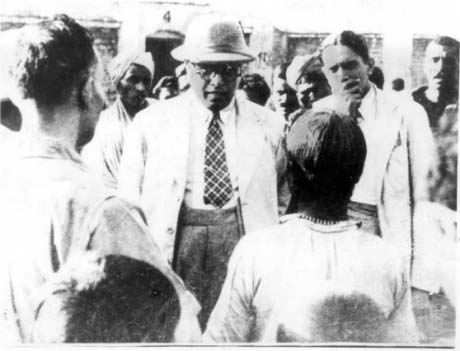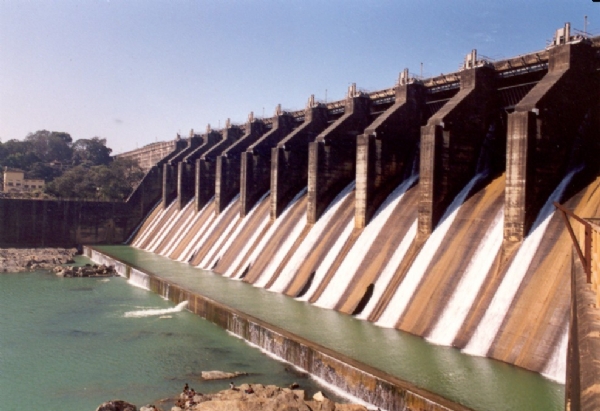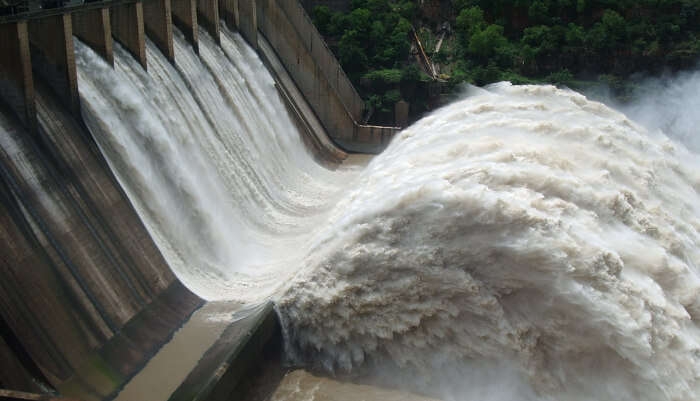Dr. B. R. Ambedkar and His Innovative Ways for Development in Irrigation
Dr. Ambedkar"s vision and advocacy for irrigation development in India were based on his belief that access to water was a fundamental right that should be available to all citizens
Total Views |
Dr. B.R. Ambedkar, also known as Babasaheb Ambedkar, was a prominent social reformer, jurist, economist, and politician who played a significant role in shaping modern India. His innate intelligence and acquired knowledge make him a highly respected expert on the political and economic concerns that are currently affecting India. It should be emphasized that Dr. Ambedkar was primarily trained as an economist in the classroom and was a respected expert on issues related to political economics and public finance. He did a thorough analysis of the economic issues British India was confronting and offered ground-breaking solutions that are still applicable today.

Ambedkar was appointed law minister of the Indian government in 1947. He played a key role in drafting the Indian constitution, which forbade discrimination against people of the untouchable caste, and skilfully assisted in guiding it through the legislature.
While Ambedkar's role as the principal architect of the Constitution is well known, his innovative approach to the development of irrigation, power, and water resource management has not received as much attention. Ambedkar played a key role in ensuring that water and power resources were developed to their full potential because of his belief in the power of scientific and technological advancement for social upliftment and his position as the viceroy's executive council member in charge of labor irrigation and power from 1942 to 1946.
Dr. Babasaheb Ambedkar was instrumental in creating the Multi-Purpose River Valley Projects and Large Dam Technologies in India. Dr. Babasaheb Ambedkar was the creator of the Damodar Valley project, the Bhakra-Nangal Dam project, the Sone River Valley project, and the Hirakud Dam project. In 1945, under the chairmanship of Dr. Babasaheb Ambedkar, it was decided to invest in the potential benefits of controlling the Mahanadi for multi-purpose use.
Dr. Babasaheb was instrumental in creating and outlining the projects such as,
1) Damodar Valley project

It was the first multipurpose river valley project in India in 1944 on the lines of the Tennessee Valley Authority. Due to its frequent flooding issues, the Damodar Valley is referred to as the "Sorrow of Bengal." To address the issue, Babasaheb had the Central Power Board set up the necessary apparatus, direct the planners and engineers, and carry out the plan that was created under his supervision. Babasaheb was in charge of the Damodar Valley project till 1946. After then, Damodar Development Corporation was granted complete control of the dam's construction.
2) Bhakra-Nangal dam
It is India's biggest multipurpose river valley project, the Highest gravity dam in India. When Babasaheb was the member in charge of irrigation and power from 1942 to 1946, he made a significant effort to ensure that the Bhakra Dam project was given top attention. As Babasaheb served as the Viceroy's Council Member for Irrigation in 1945–1946, this job was completed.

Similar to this, the Sone Valley Project was viewed as a multipurpose river management plan that addressed not only the area's potential for irrigation by canals and enduring hydropower but also for increased utilization of such power for agricultural development, such as for pumping from tube wells and increasing fertility by dewatering in waterlogged areas, provision of affordable power for industrial development, and improved supply of water for irrigation on the Ganga.
These projects have played a crucial role in transforming India's agricultural landscape and improving the lives of millions of farmers.
Dr. Ambedkar evolved a new water and power policy during 1942-46 utilizing the water resources of the country to the best advantage of everybody and the Tennessee Valley scheme of The USA was an ideal model to emulate. He rightly visualized that only a multipurpose project can be five prospects of the control of the river, a prospect of controlling floods securing five areas for perennial irrigation with resultant insurance against famine, a much-needed supply of power, and uplifting the living standard of poverty-stricken people of India.
The Central Government's irrigation and electric power policy during 1942-44 reflected the View of Ambedkar on the poor and their place in the planned economic development of the water resources of the country.
In the year 2016, the Government of India announced that on 14th April the birth anniversary of Dr. B. R. Ambedkar will be observed as ‘Water Day in the country to let the people know more about his Contributions to the development of water resources.
In conclusion, Dr. Ambedkar's vision and advocacy for irrigation development in India were based on his belief that access to water was a fundamental right that should be available to all citizens, and that irrigation was essential for achieving economic and social equality in the country.


